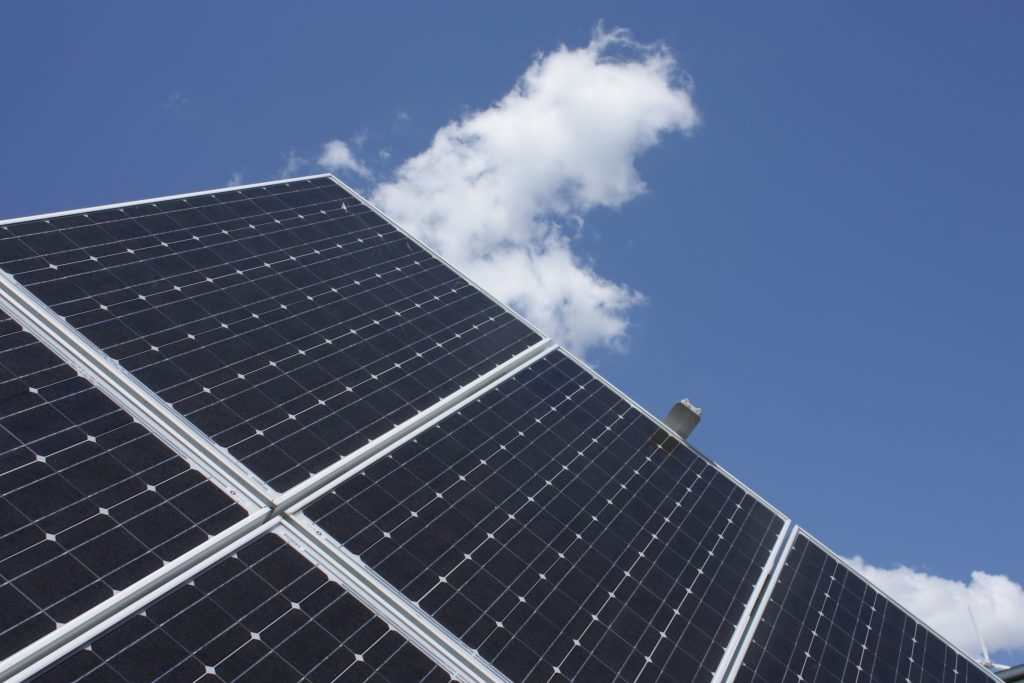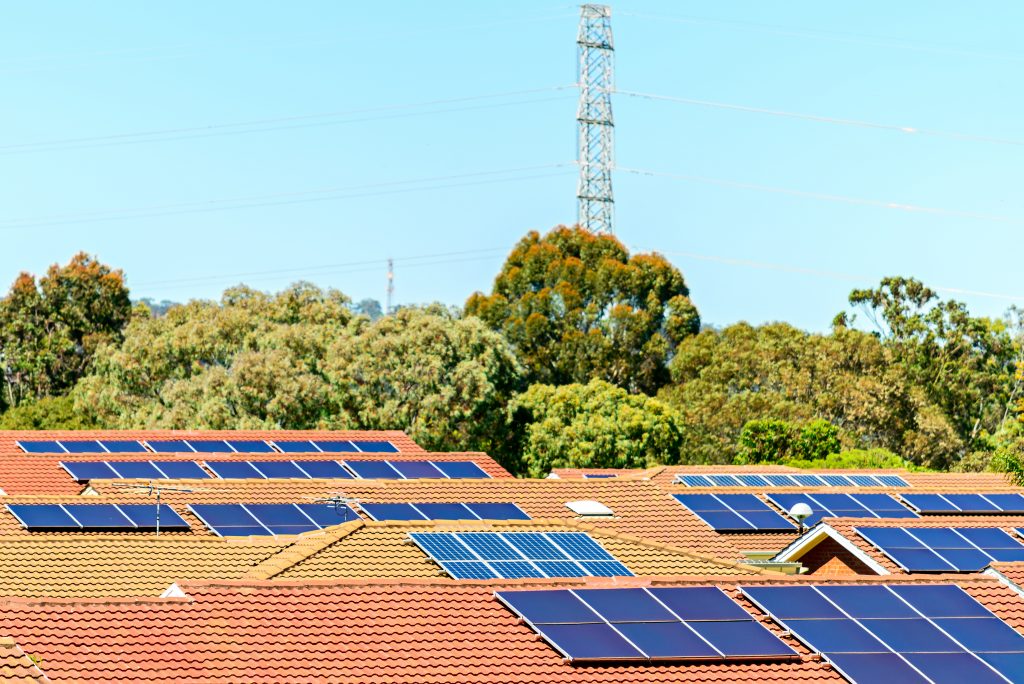Our Virtual Power Station project is ensuring that distributed generation sources (e.g. rooftop solar panels) can support our evolving electricity grid.

Solar photovoltaic (PV) panels – an example of ‘distributed generation’.
As extreme weather events put our electricity infrastructure to the test, our energy future has become a topic of considerable discussion. Essentially: how can we ensure the reliability and security of our electricity network while reducing emissions and costs for consumers?
A number of key reports have recently been published, including our own Electricity Network Transformation Roadmap and the Chief Scientist’s Independent Review into the Future Security of the National Electricity Network. These reports provide some clarity on how the electricity network can transition into the future with a higher penetration of low-emissions electricity generation.
They also highlight the importance of reliability and security in the future electricity network but recognise the technical, economic, and regulatory challenges of balancing this with lower emissions and costs for consumers.
But what does this future electricity landscape look like and why is the network’s reliability and security such an issue?
I made it myself…
Well, one current trend is that electricity is no longer being generated solely by large, centralised power stations. Instead, consumers are generating their own right from their homes and businesses. This is called ‘distributed generation’ and for most people it takes the form of rooftop solar photovoltaic (PV) panels. In 2016, rooftop PV supplied just over 3% of Australia’s total electricity generation in the national market, but it is projected that by 2050 up to 45% of Australia’s electricity could be generated from consumers using this distributed generation!
This projection is quite significant and exciting as it means there is potential for a large amount of renewable, emission-free generation which has the potential to improve the network’s stability and keep electricity costs to consumers lower. Integration into the broader network is key as this level of generation, if installed without planning, has the potential to compromise the stability of the electricity network.
Stable network = good network
A stable electricity network must constantly balance supply with demand and tightly control key network parameters such as power frequency and voltage. High penetrations of rooftop PV can, for example, cause sudden voltage fluctuations and threaten the local stability of the network. This might lead to blackouts and a decrease in the power quality on the network. If left uncontrolled, it may require network operators to spend more on infrastructure (i.e. thicker wires) for the network to withstand these fluctuations. Of course, these costs would be seen by consumers. Also, the amount of electricity that rooftop PV is generating is not normally known by network operators which makes it harder to balance supply with demand.

We’re seeing incredible uptake of rooftop solar, but how can we ensure the electricity grid remains stable?
Virtually solved
Addressing the challenge of increasing the amount of rooftop PV on the network whilst maintaining a more stable network is one objective of our Virtual Power Station project, and thanks to support from the Australian Renewable Energy Agency (ARENA), we’re overcoming challenges never before seen in the energy sector.
Our Virtual Power Station is a collection of solar panels, batteries and electrical appliances (such as air conditioners) in a neighbourhood that are intelligently managed to maintain the stability of the power supply. The system can manage distributed generation systems by optimising how and when we use energy from, and input our own electricity into, the grid.
We’re currently testing in a real residential network (shout-out to the suburb of Yarrabilba in Queensland), where we will be able to coordinate not only rooftop PV but also batteries and air conditioners in the network to demonstrate how both consumers and the network can accommodate and benefit from distributed generation.
Interested in learning more about this project? Check out our previous blogs: Virtual Power to the People and Heating up: Energy intelligence to tackle blackouts.
Stay tuned for more news on our Virtual Power Station project, and in the meantime, check out our other cutting-edge energy research.


14th July 2017 at 9:14 pm
More roof panels needed,and lower cost for batteries for storage
14th July 2017 at 8:25 pm
When the sun no longer shines and the wind isn’t blowing no battery backup would be capable of keeping the lights on. Lots of “pie in the sky” ideas are in the air but base load generation of some sort is still required. It would also be interesting to calculate the comparative costs ( financial and pollution in manufacture/ rare minerals etc) in generation of the necessary power.
18th July 2017 at 9:26 pm
Hi Richard, the evidence suggests otherwise. http://reneweconomy.com.au/german-grid-operator-sees-70-wind-solar-storage-needed-35731/